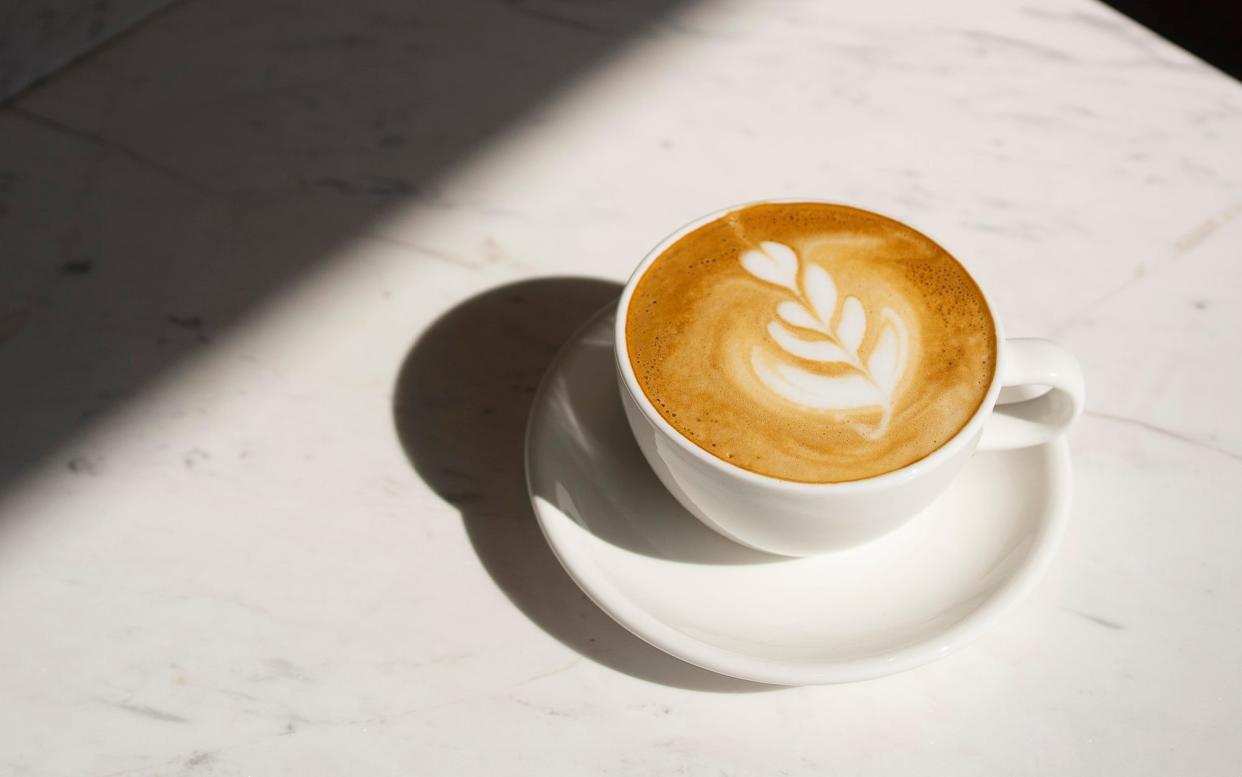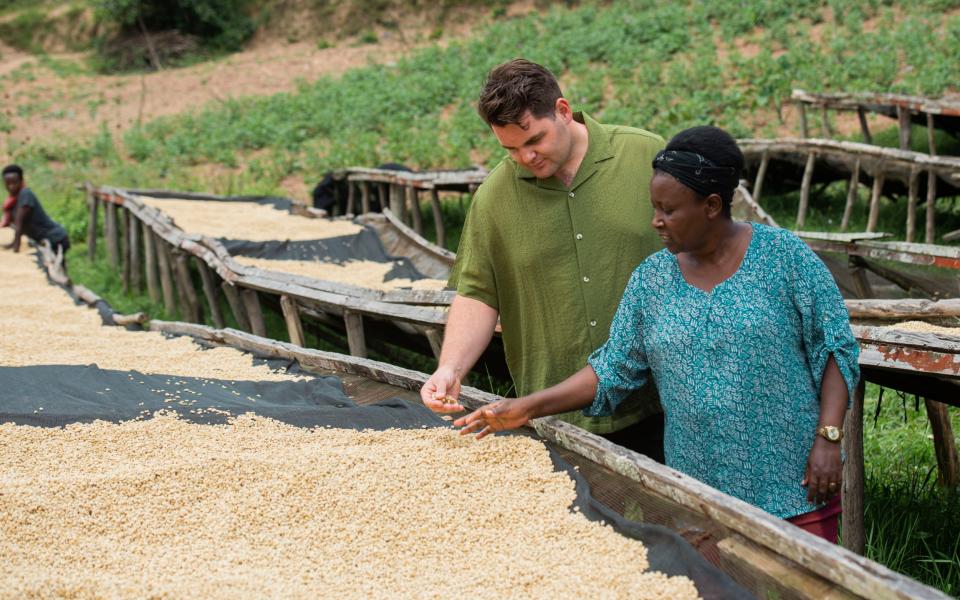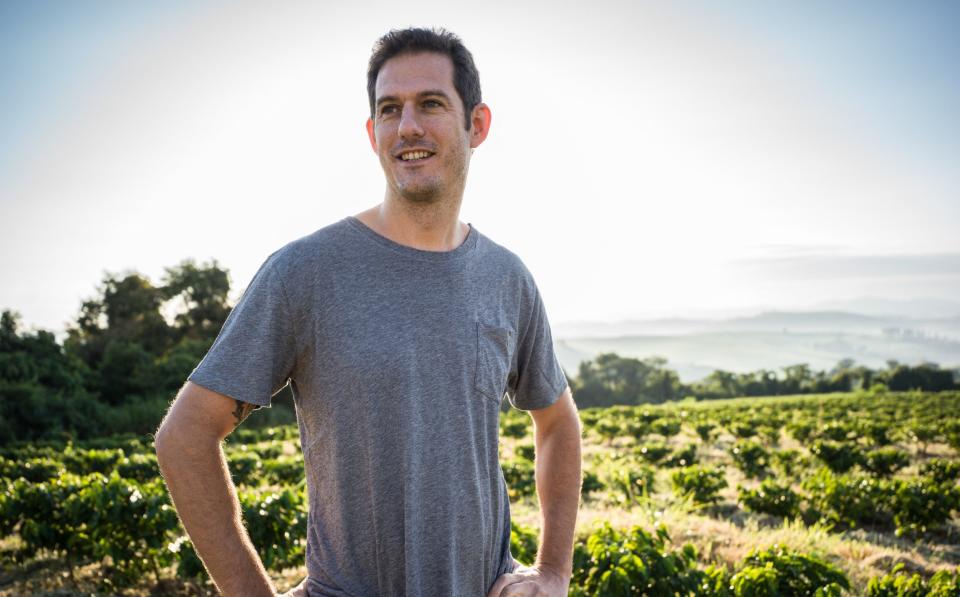Why your morning coffee is facing extinction

Every morning, before doing anything else, I make coffee. It’s a ritual as much as a caffeine fix, with little thought given to its provenance. Yet this morning, I’ve got my hands on something a little different. Lighter in colour than my usual jet-black brew, it is more nuanced in flavour, with hints of grapefruit and less bitterness. It is delicious. It may also secure the future of one of the world’s most popular drinks.
In Britain, we drink about 98 million cups per day, with an estimated two billion consumed worldwide. The coffee industry sustains 210,000 jobs here, and around 100 million farmers depend on it globally. From instant coffee at a greasy spoon to a fancy oat-milk latte, coffee is big business. Yet its future is at risk.
A recent report by Christian Aid warned that climate change could reduce the land available for growing coffee by 54 per cent by 2100, even if global temperatures are kept to internationally agreed targets. On May 17, the World Meteorological Organisation said that temperatures could breach the 1.5C above pre-industrial levels by 2027. It’s not good news for coffee growers and lovers.
According to Dr Aaron Davis, a global expert in coffee and climate change, and head of coffee research at the Royal Botanic Gardens, Kew, coffee is one of the most researched plants when it comes to climate change, with almost 150 studies published, and the outlook seems dire. Even if commitments to reduce carbon emissions are met, a 2022 study in Nature suggests coffee production will still see a rapid decline in countries accounting for 75 per cent of the world’s arabica coffee supply.
“It’s not something that’s going to happen in the future, it’s already happening,” says Dr Davis. “It’s very real.”

The world’s largest producer, Brazil, and Vietnam, the second, have both experienced concerning weather patterns just this year: extreme heat and drought in Vietnam, heavy rains in Brazil. “Last year, coffee harvests were influenced by drought in many countries, and long-term climate change may cause those drought periods to become longer, more severe and more regular,” Dr Davis explains. In Uganda, exports fell by about 20 per cent in 2022.
Coffee is a picky plant, requiring the right conditions to flourish. Global production focuses on just two of the 130 known species; a lack of genetic diversity makes it particularly susceptible to disease and pests. Arabica is a cool-tropical plant, comfortable in mean annual temperatures of about 19C. It is considered superior, in terms of flavour, and accounts for 56 per cent of coffee production. Robusta makes up 43 per cent, and can grow at lower elevations and higher annual mean temperatures, but is mostly reserved for instant coffee and blending.

Coffee can only be grown in the “bean belt”, between the tropics of Cancer and Capricorn, and needs the right amount of rain and heat to thrive. When that changes – as is happening in most coffee-growing areas – it can wreak havoc on harvests. The effects of pests and disease, often exacerbated by changing weather, are also a concern. Arabica is particularly susceptible to leaf rust, a fungal disease that stunts the plant’s growth and yield. It destroyed most of Sri Lanka’s crop in the late 19th century and hit South America hard in the early 21st century.
“It remains a major constraint for coffee production,” says Dr Davis, while coffee berry disease and coffee wilt disease are hampering Africa’s production of arabica and robusta. To save your morning macchiato, scientists are ramping up the search for new species and varieties of coffee, ones that might be more drought or disease resistant, or be able to be grown in higher temperatures.
One such species is Coffea stenophylla, a rare coffee from West Africa. In 2018, Davis was part of a team that rediscovered the plant in the Sierra Leonean jungle – it hadn’t been seen in the wild there since 1954. A study released in 2021 posited that its tolerance of high temperatures and its superior flavour – professional tasters likened it to the best arabica – could lead to it becoming a key coffee of the future.

Will Corby, director of coffee and social impact at Pact, a UK-based sustainability- and ethics-focused coffee importer and subscription service, agrees new species are the key to coffee’s future, but sounds a word of caution: “We don’t know whether farming [them] is going to be commercially viable from a cost perspective.”
Dr Davis is also working with colleagues and farmers in Uganda and South Sudan on another species, known as excelsa, first discovered in Central Africa at the turn of the 20th century. It never reached the mass market. According to farmers who are using it, excelsa tolerates higher temperatures and drier conditions than robusta and, for many, has a better flavour.
“We’re working with farmers and exporters to develop a market for it in Uganda,” he explains. “We’ve got something like three to four tons for export this year, but in 10 years, Uganda and South Sudan could be producing several hundred tons.”
In Brazil, farmers are highly concerned. At Fazenda Ambiental Fortaleza (FAF), a 150-year-old coffee farm in the hills a few hours from Sao Paulo, Felipe Croce and his family have turned the farm into an open-air laboratory, where Croce experiments with new, climate-friendly methods. The trees house monkeys and toucans; at night, wolves can be heard near the farmhouse. It feels more like a nature reserve than a farm, more jungle than the neat monocultures often seen in Brazil, but FAF is behind some of the country’s best coffee.

“Coffee is at medium- to high-risk with climate change,” Croce tells me. “We can adapt, but this takes investment, research and development in new techniques, and we may see movements in the near future of demand surpassing supply.” He says that is “highly likely” 10 to 20 years from now, “if we don’t make some serious changes to how coffee is grown”.
Croce says Brazil suffered one of its worst ever frosts in 2021, causing a momentary shortage in coffee supply and an increase in price of more than 100 per cent, year on year. Certain coffee-growing areas of Brazil are already being abandoned, according to Croce, while other regions experiencing longer periods above 30C are becoming challenging. At FAF, coffee is grown in shade, under banana trees, or even within the forest. Most Brazilian coffee is grown directly in the sun – where it reaches harvest more quickly – but growing it in shade helps lower temperatures, can provide refuge for animals, helps sequester more carbon and is coffee’s natural environment. Banana trees protect it from frost, too.
Yet changing farming methods can be expensive and risky for farmers, while growing on new land risks deforestation. FAF works with more than 300 family farms to help them grow and export their crop, with the coffee sent across the world, including to the UK.
Disease-resistant varieties of arabica and robusta developed by genetic scientists are crucial to combating disease and climate change. At FAF, new varieties, including some developed internally, have been introduced successfully. Pact also encourages the farmers it works with to grow climate-resistant varieties.

“In the past five years, we’ve seen dramatic changes in the wet and dry seasons, and a massive increase in the volume of rain,” says Corby. “Historic varieties of coffee don’t have the disease resistance you’d expect from modern varieties.” New varieties of arabica, developed with the Colombian government, have produced a higher yield and disease resistance. One, parainema, is truly delicious – it’s the coffee that ended up in my cup this morning – and could help secure the future of coffee.
“New varieties are going to be vital to the continued production of coffee over the next few decades,” says Corby. Pact was the first roaster to import another promising new coffee, Cenicafé 1, and Corby is optimistic about its potential. “I think it’s going to be revolutionary worldwide,” says Corby. “It should be exciting for everybody, there’s so much tasty coffee to come.”
How to drink coffee ethically
Buy better
Buying coffee ethically, which provides a better income for the growers, as well as more sustainable growing practices, generally costs more. Pact’s Will Corby acknowledges this can be difficult. “Right now, there’s no silver bullet for consumers,” he says, “with too many different types of certification.” Pact buys directly from the producers and pays above Fairtrade prices, but its coffee starts at £7.95 for a 250g bag. Corby says the company’s rapid growth proves there is a thirst for ethical coffee.
Recycle pods
In 2021, it was estimated that almost 30,000 coffee pods go to landfill each month. They can take 500 years to decompose. Buying recyclable – or, preferably, reusable – pods can go a long way to reducing waste. Some pod brands have their own recycling schemes, while reusable pods can be refilled at home and used on your machine. Look out for compostable pods, too.
Measure your coffee properly
Most of us throw ground coffee into our chosen receptacle without measuring it, but using the correct amount – often less – can help make your bag go further. Generally, one tablespoon is enough for one cup, although fans of strong coffee may want a bit more.

 Yahoo News
Yahoo News 
